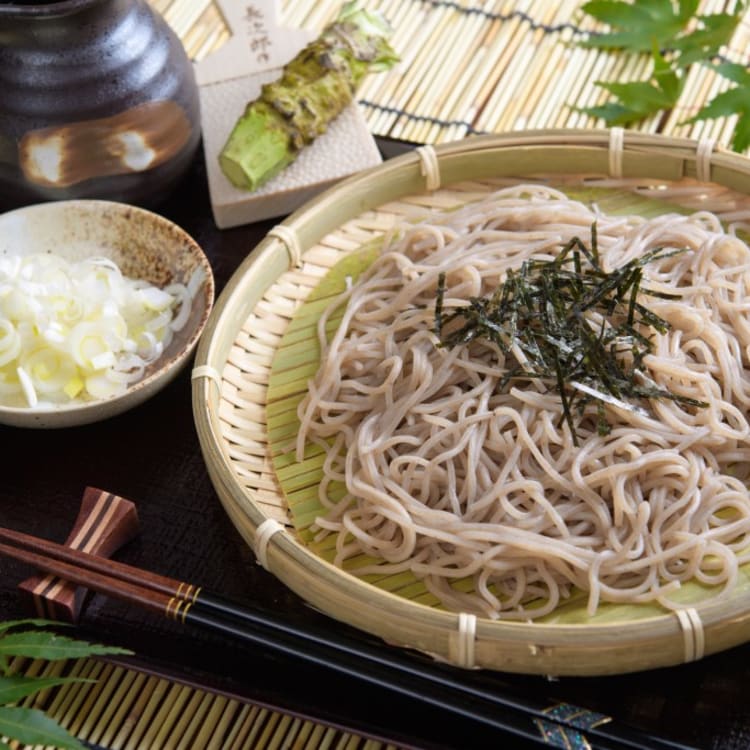
An Insider's Guide to Soba Get a taste of the dedication that goes into mastering Japanese soba
We sit down with master soba maker, Yoshinori Shibazaki, to talk all things soba noodles including his passion and skills to make the very best te-uchi (handmade) soba, his connection to Australia and about Niigata, the prefecture he now calls home. We guarantee you’ll have a whole new respect for soba noodles and crave a trip to Japan to have some after you read this.
Can you tell us a little about your background? What prompted you to become a soba master and to establish soba restaurants both in Japan and overseas?
I grew up in a soba family – my father was a soba noodle maker and had a restaurant called Shimbashi in Shizuoka City. My first memory of eating soba was as a 4-year-old and I remember I really liked it. As a child, I would often help my father in the restaurant. After school I worked as an apprentice at a famous soba restaurant in Tokyo and then returned home to help my dad and refine my skills making te-uchi soba. This is fresh, handmade soba where we grind the buckwheat to make the flour, knead and roll the dough and slice it into noodles ready for cooking – we repeat this process 2-3 times a day!
My father and I began talking about establishing a restaurant overseas to introduce Japan’s te-uchi soba culture. At that time, I had the good fortune to visit Tasmania on a trade mission to launch the first premium buckwheat grown in Tasmania exclusively for the Japanese market. My wife Keiko and I decided to move to Australia and in 1993 set up the first international Shimbashi restaurant in Sydney’s Neutral Bay. This was the first time a soba restaurant had been established in the southern hemisphere. Before this, soba was only available at generic-style Japanese restaurants and made from dried noodles.
We later relocated to Woolloomooloo, before setting up a restaurant on the Gold Coast (which is now closed, but we do have one in Brisbane). After launching Shimbashi in Singapore and Melbourne, we returned to Japan. We now live in Niigata, where my wife’s family are from, and run a branch of Shimbashi here. I’m proud of the Shimbashi branch restaurants in Sydney, Melbourne, Brisbane and Singapore and our own role promoting soba culture to an international audience.
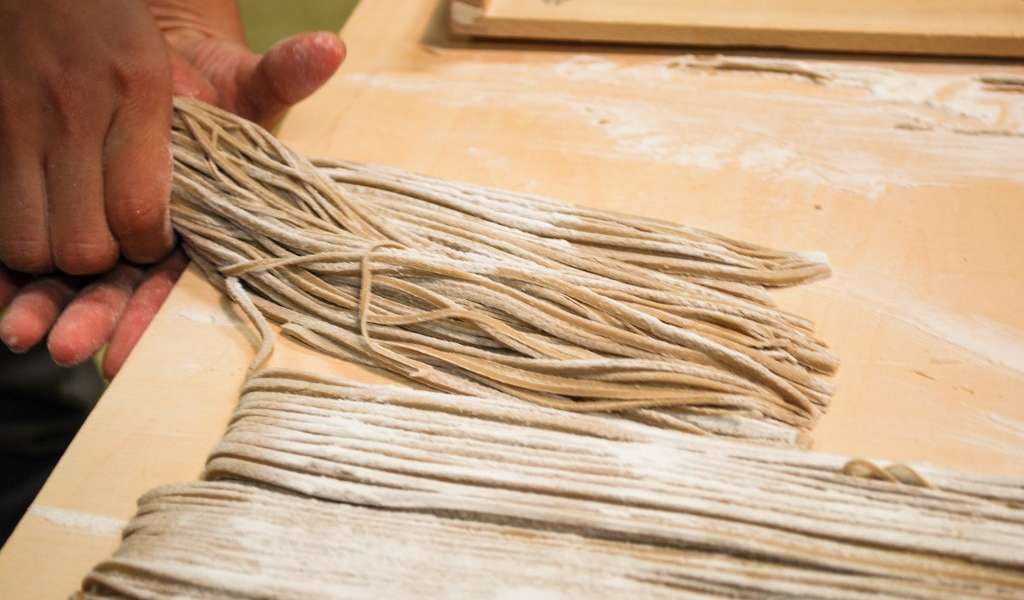
Why is soba, while not as well-known internationally as ramen, so highly regarded in Japan? How is it different to ramen?
Ramen has definitely become very popular overseas. Made from wheat, ramen is not unlike pasta. The noodles are easy to eat and combined with the flavourful broth, the overall taste is strong and slightly oily. But perhaps not so great for the waistline if eaten every day! In contrast, soba is made from buckwheat flour, is grey-brown in colour and served with a broth typically made from soy sauce and fish stock. Since ancient times, soba has been regarded as good for you, able to be eaten daily and even recommended at times of illness. It’s a type of ‘soul food’ in Japan.
Soba was first eaten in noodle form in Japan around 400 years ago. It spread across the country and was enjoyed on special occasions as well. In the past, with the rise of the merchant class during the Edo Period (1603-1867), soba became fashionable among wealthy business owners. The culture of eating ramen emerged in more modern times, particularly among labourers as it was hearty and filling.
Soba is something we’ve all grown up with in Japan and eaten as kids. It’s a fundamental part of our food culture. While they say the ramen lover will travel to the next town to find good ramen, the soba lover will travel across the country.
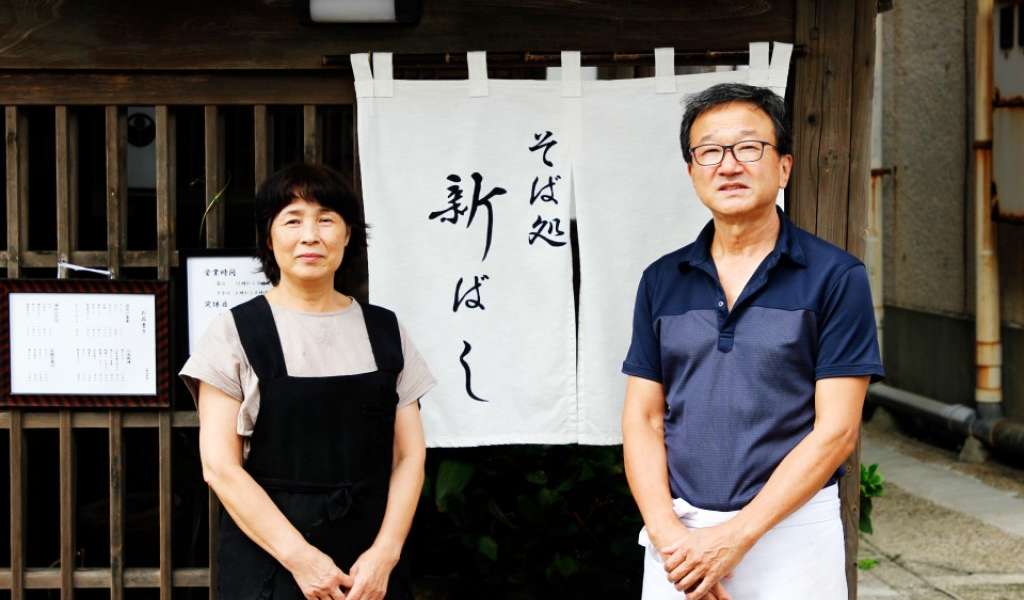
Yoshinori Shibazaki & his wife, Keiko ©️Things
Can you tell us a little more about soba’s health benefits?
Buckwheat contains the bioflavonoid rutin, known for its effectiveness in reducing cholesterol. Rutin generally helps lower high blood pressure, promote circulation, reduce blood clotting, and aids in removing toxins from the blood. Buckwheat also has a higher protein makeup than any of the grains (apart from legumes). It’s also rich in vitamins and minerals, low in fat and high in dietary fibre. It can help reduce the risk of heart attack and stroke.
I have some customers who drop by our restaurant every day to collect the soba-yu (the nutrient-rich water left after the noodles are boiled) which they drink at home. They swear by its ability to reduce blood pressure.
Before modern times, were there certain parts of Japan which traditionally grew buckwheat and consumed soba as part of the regular diet?
It’s believed that buckwheat has been grown in Japan for some 9,000 years and was originally eaten as a porridge-style broth and dumplings. Soba is most strongly associated with Nagano Prefecture, which still produces the largest harvests and has a climate well suited to growing buckwheat. Even today, more people eat soba on a regular basis there than anywhere else in Japan. Also, they eat a lot! While typically the average serve of soba for one person would be 80 grams in Tokyo, or 140 grams in my own restaurant in Niigata, in Nagano it ranges from 350-500 grams!
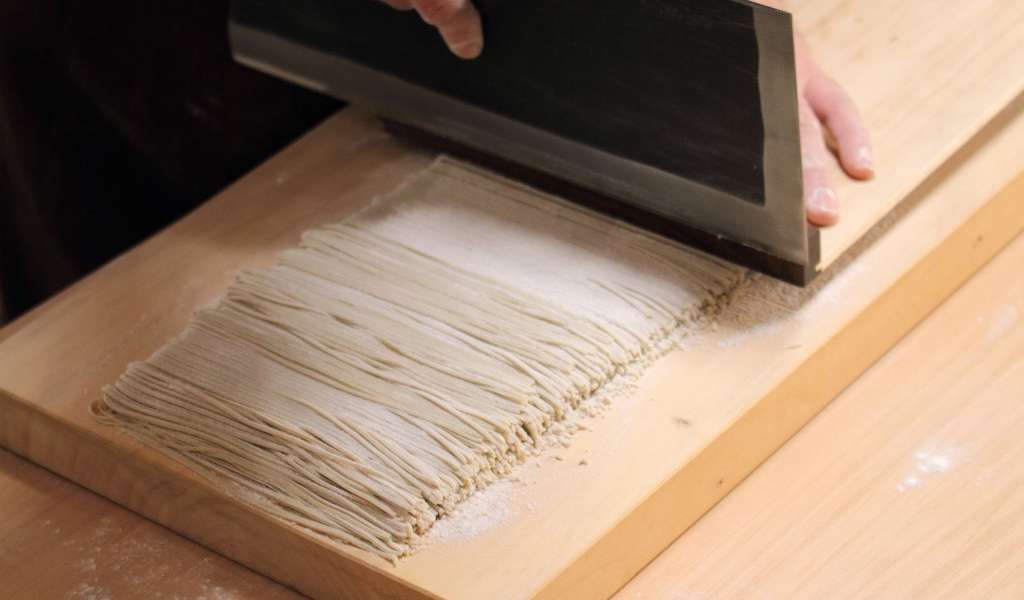
What is the secret to making good soba?
The most important thing is the quality of the ingredients. Milling the flour each day is also critical – this releases the subtle aroma of the buckwheat and enhances the overall flavour and texture. Getting the volume of water right is essential. Too little water will make for an overly tough noodle and too much water makes it too sticky. Soba needs a lot of kneading, and it’s important to apply the right amount of pressure. I talk about not applying too much ‘stress’ to the dough at this time. If the dough is overly stretched and pummelled, then the noodles are likely to break during the boiling process. Flavour will also be affected.
The broth or dipping sauce is another integral part of the process and getting the right balance between the flavour of the liquid and that of the noodle is critical. It constantly needs to be adjusted, based on various changing factors.
I source my buckwheat from Tasmania. I personally like the 'full-bodied' flavour of the Tasmanian product. It benefits from the stronger sun in Australia, has a higher concentration of rutin so its health benefits are greater; plus it is completely organic.
What are the different ways to eat soba, and what toppings would you recommend?
Soba is served either cold with a dipping sauce, or in a hot broth with a variety of different toppings. Many soba connoisseurs in Japan prefer to eat their noodles served cold so they can better savour soba’s delicate aroma and flavours. A popular dish is mori soba, simply served with a dipping sauce with slices of spring onion and wasabi. This can be a bit intense for first timers, so I would recommend a bowl of tempura soba – hot soba, topped with some lightly fried tempura prawns.
At night, visitors to soba restaurants in Japan may sit down to a meal beginning with several seasonal dishes as entrees (including norimaki rolls made with soba) while enjoying some beer or sake and finishing with the main meal of soba. This is a lovely way to enjoy our soba culture.
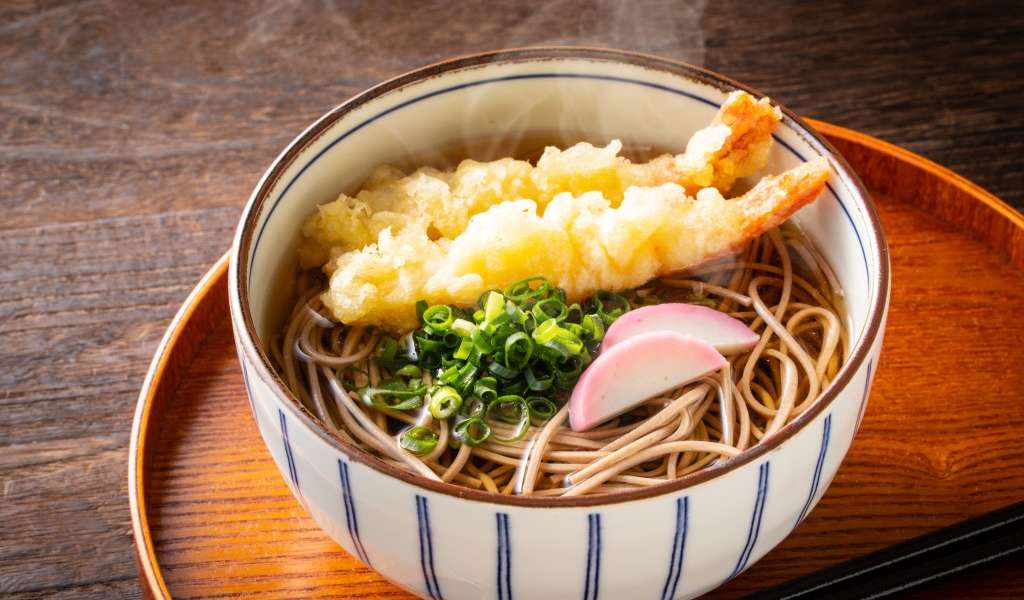
Tempura soba
We understand you have run successful soba restaurants in Australia and Singapore as well in Japan. What were the key differences across the different markets?
The biggest difference is that there is no tradition of eating cold noodles overseas, as mentioned before. Consequently, there was more demand for soba served hot. Another major difference is that customers going out to eat Japanese overseas have the expectation to try different dishes, so not just soba, but other cuisine types like sushi or sashimi, donburi rice, tempura, etc. In Japan, typically customers would visit soba restaurants to simply enjoy a bowl of freshly made soba or as a main dish with accompanying sides.
Can you tell us a little about why soba is traditionally eaten on New Year’s Eve?
The long and slender shape of the soba noodle symbolises stability and longevity. Eating soba on New Year’s Eve expresses the hope that the new year will bring longevity, prosperity, health and protect against bad luck. This tradition is known as toshi-koshi soba and for soba restauranteurs it’s our busiest time of year.
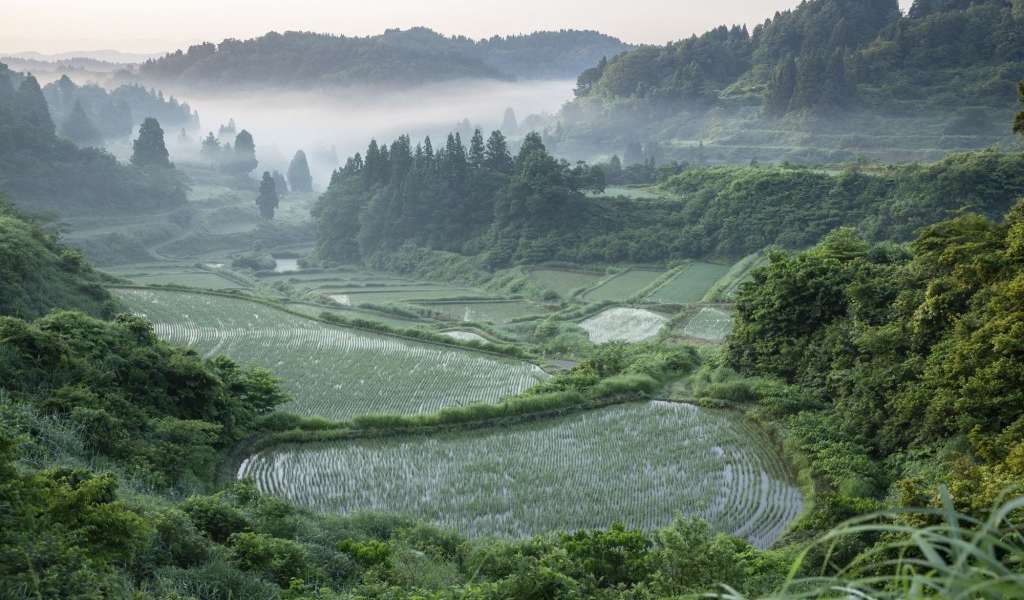
Hoshitoge Rice Terraces
We know that Niigata is renowned for the quality of its local produce. What special Niigata produce do you source locally?
Yes, Niigata is particularly famous for its local produce, ranging from everything from rice (said to be the best in Japan) and sake (made from that local rice and clear mountain water), fresh seafood from the Sea of Japan, and all kinds of vegetables. Tomatoes, eggplant and edamame (young soybeans) are particularly good in summer and now in autumn we’re enjoying chestnuts and fresh oysters. Winter to late spring is the time for sansai (a type of mountain vegetable which we pick in the wild here) – these are superb lightly fried as tempura with our soba or served as a side.
What are some must-sees or must-dos in Niigata for international travellers?
Most international travellers may know that Niigata has good skiing and Echigo-Yuzawa is a short eighty-minute shinkansen ride from Tokyo with onsen (hot springs), traditional ryokan (Japanese-style inns) and ski lodges. Sado Island is great for those who like exploring, famous for its taiko drummers but also its natural scenery and beautiful sunsets. I also like to recommend visitors to simply take a leisurely road trip around the Niigata countryside – to see both its mountains and coastal fishing villages.
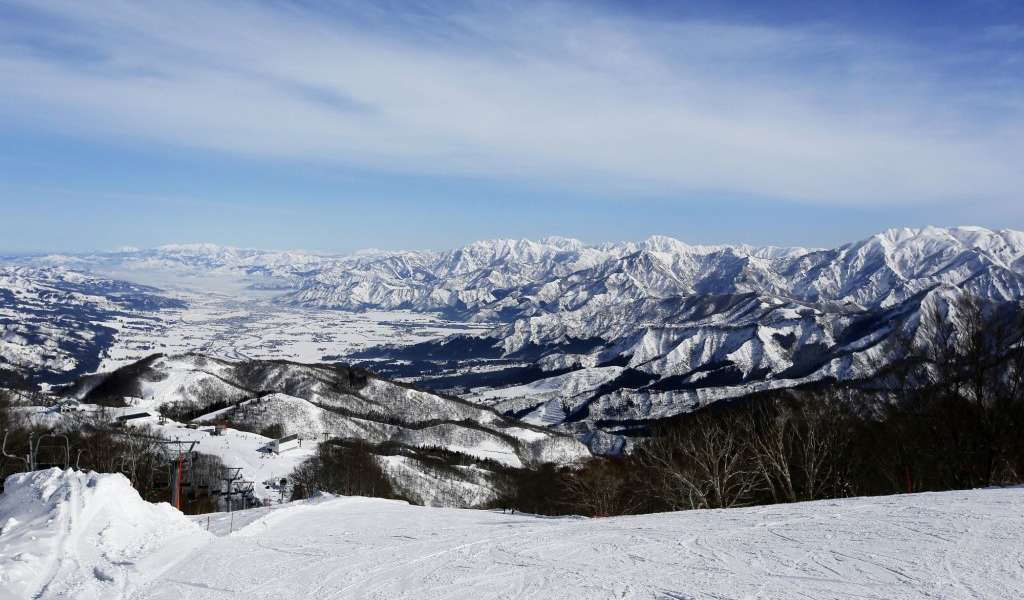
Gala Yuzawa Ski Resort
The pace of life is slower here and you’ll find there’s a great variety of things to do. For something a bit unusual, Ojiya Nishikigoi no Sato breeding centre is worth visiting for its unusual species of colourful patchwork carp. I would also recommend timing a visit with Niigata’s Sake Fair in March, where you pay an entrance fee and can freely taste over 90 types of local sake. But perhaps the most quintessential Niigata experience is our izakaya (Japanese-style pubs), where you can sit with the locals and taste the best of Niigata’s rich local produce and some of our famous sake of course!
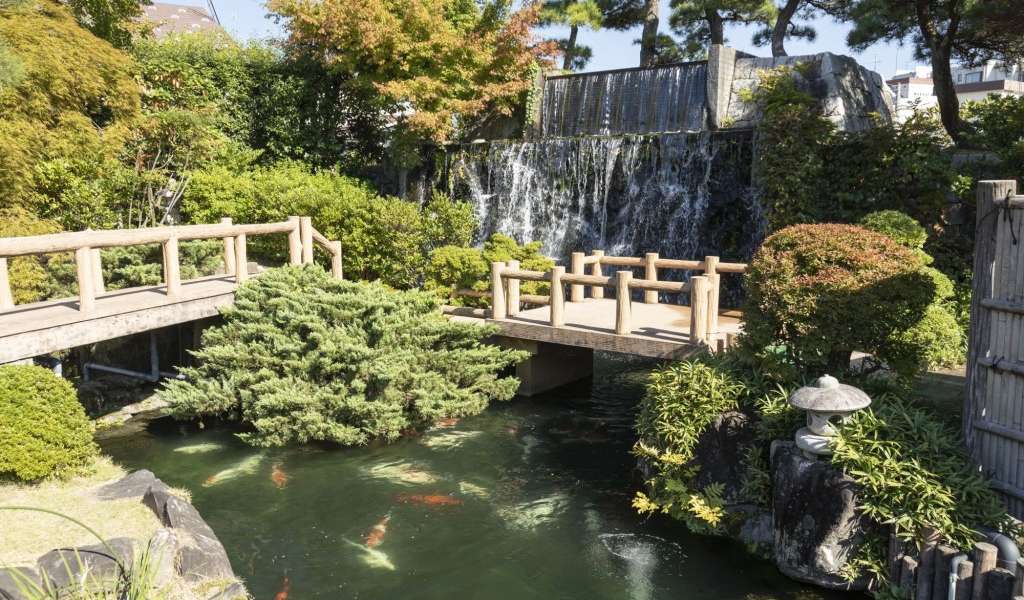
Nishikigoi no Sato
How To Get Here
Niigata City is easily accessible by bullet train from Tokyo Station with a two-hour direct ride. The prefecture is also conveniently accessed via plane from major cities including Nagoya and Osaka. Once in Niigata City, Shimbashi is 15 minutes by bus (to Furumachi bus stop) from Niigata Station or a 7-minute taxi ride.
Shimbashi contact details:
1-374 Minamihama-dori, Chuo-ku, Niigata City, Niigata Prefecture
Tel: 025-211-4769




























































